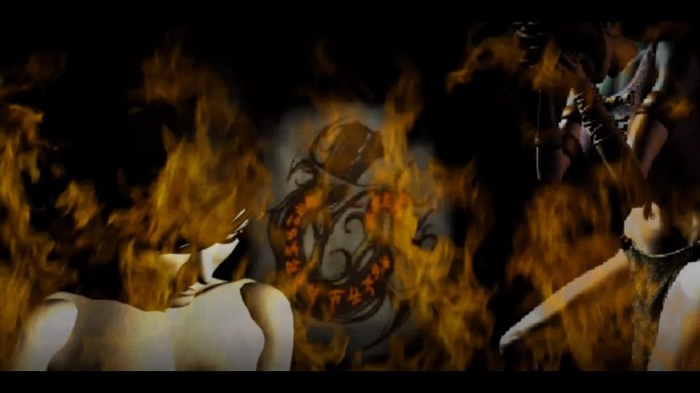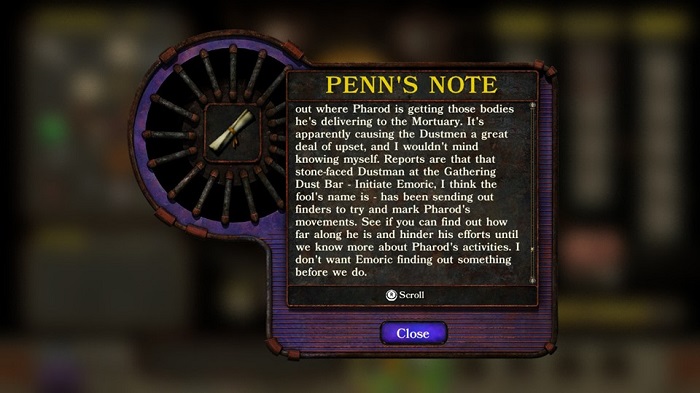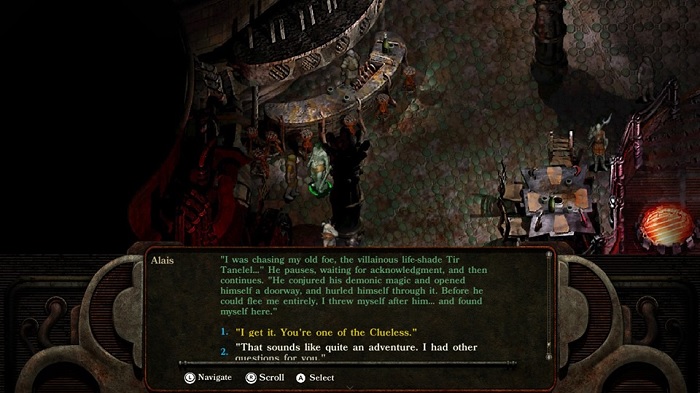Subjective:
Publisher and developer Beamdog present the PC Dungeons and Dragons game Planescape: Torment to the Nintendo Switch for review. The simplified control scheme aims to put players in direct control of The Nameless One, an amnesiac warrior who wakes up on a slab with only a talking skull providing answers. The turn-based combat is the side show to role playing, allowing players to make choices that shape The Nameless One’s present while putting context on the past.
Objective:
Planescape: Torment is the D&D game for people who want to dive deep into description instead of action. It’s not for a lack of action as The Nameless One will be in plenty of fights as soon as they wake up on the slab. But outside the fights, all information comes from people with their own agendas and histories with The Nameless One. Whether the player trusts or denies the information provided is all up to their perception instead of what the game tells them to believe. The system is based on classic D&D, which means less mechanical complexity or flexibility.
Want to be strong? Pump points into strength. Want to be smart? Make those intelligence and wisdom score skyrocket to find out what new dialogue options await. Since the core of Planescape: Torment is a mystery- finding out who The Nameless One is and why powerful forces have taken an interest in their life- bashing answers out of people or coercing them are both valid paths that may yield different outcomes of context if not necessarily plot.

Assessment:
The Nameless One is one of the greatest RPG protagonists in the history of video gaming, at least until I start to learn more about him. When I first play as The Nameless One and learn of their immortality I’m able to project whatever story I wish upon them. An infinite number of lifetimes in a world where ideas can gain sentience means their life is subject only to my imagination. Whatever I want to project, good or bad, can shape how I respond to people and what quests I take. The game follows suit, assigning me an alignment that in-part determines how other characters are going to react to my iteration of The Nameless One.
The problem with that approach is also the folly of Planescape: Torment. I may be able to envision different lives for The Nameless One, but the plot of this game hinges on decisions made by specific lifetimes The Nameless One lived. This isn’t a RPG of infinite possibilities that exist within my imagination. It’s a set of attitudes and ideas that I have about how to respond to this particular circumstance, even if I have ideas about how I want my version of The Nameless One to have lived through their other existences. This isn’t a problem unique to Planescape: Torment but, considering how often its billed as the greatest RPG of all time, its something to ponder as I’m railroaded into a vast cosmic conspiracy after waking up on a slab.

The infinite possibilities of The Nameless One are also undone by the still ugly graphics. Planescape: Torment takes place in a world where ideologies and ethics become tangible beings. Yet, the majority of the game is presented in what is most charitably described as industrial rust. There’s still some intrigue there, having a game where the infinite possibility of the environment can spring surprises. But it’s a monotonous one to traverse, something that is reinforced by the dull combat that frequently forces itself in between conversation. Planescape: Torment was difficult to play on the PC back in 1999 for this same reason.
Even with those issues, the Switch version of Planescape: Torment has become my preferred way of playing it. This is because Beamdog, in providing a way of guiding The Nameless One via joysticks instead of a mouse, has turned the RPG into more of a visual novel. The best parts of Planescape: Torment involve delving into the interior lives of people and trying to talk through their wishes to get a piece of the larger puzzle involving The Nameless One. Switch in hand, reading through the glow of the lies and half-truths, I’m able to get more into the rhythm of conversation instead of squinting toward poor resolutions. Since there’s not as much emphasis on sidequests and grand battles, it makes for better bite-sized chapters of intrigue. I learn a bit about The Nameless One, I put the system down, and since the adventure is primarily about them it’s easy to return to.
In a twist I didn’t see coming, what I felt Planescape: Torment lacked as a computer RPG turns into mild strength as a console RPG. Directly controlling The Nameless One with the joysticks gives me more direction over their fate instead of the cold precision of a mouse. The environments are still surprisingly monotonous, but I’m directly moving The Nameless One through the muck of the different planes of existence. So when I hit those high points, be it the conversation with a tormenting witch or the brilliant conversation-packed Brothel for Slaking Intellectual Lusts, it’s more akin to reading a great novel with a bit of interactivity unwelcomingly tacked on.

The Review
Planescape: Torment Enhanced Edition for Switch
The necessity of changing the control scheme, and visual scope, of Planescape: Torment gives it new life on the Switch. It's still not the best RPG ever made (as if any game can be heralded as the primary marker of greatness), but the intimacy of guiding The Nameless One now feels fresh. If you're able to look beyond the still ugly background and poorly aged cutscenes, you'll find a RPG experience worth going along with even if the PC version didn't satisfy.
PROS
- The Nameless One is a phenomenal protagonist, able to invite any player to project their own imaginative story onto what shapes their destiny.
- The Switch's joystick controls create intimacy in The Nameless One's journey, inviting closer inspection of the surroundings and what decisions you make.
CONS
- Frequent stretches of monotony, be it in the deemphasized combat or aesthetic, drag the experience in-between the stellar roleplaying moments.



